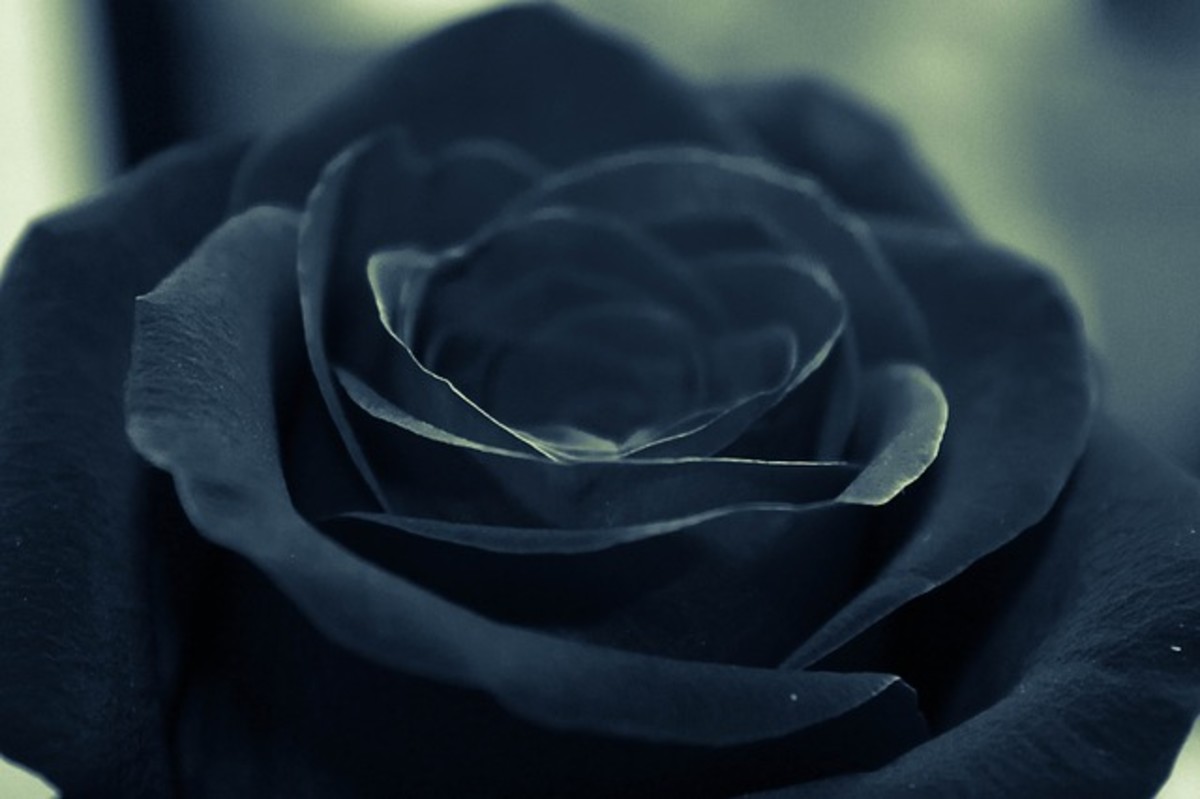What is Avant Garde?
Bananas and the Avant Garde
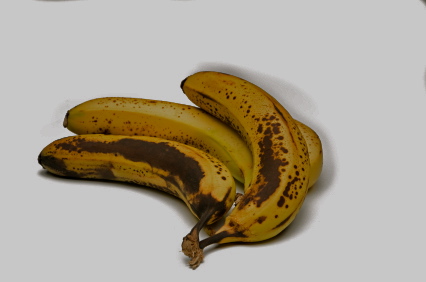
Art in Motion
French philosopher Jean-Paul Sartre once wrote that “books are like bananas; their flavour can be properly appreciated only if they are consumed on the spot”. What Sartre meant was that literature [and all art for that matter] must be in a constant state of change if it is not to stagnate. A writer who works according to the conventions of the past, instead of inventing new ones, is really producing old rotting bananas. This is the central argument of exponents of avant-garde attitudes or in more modern parlance, “out there” attitudes; the word avant-garde may itself be a rotting banana since it is a product of a past generation. If this attitude is correct then it's a logical conclusion that art and literature can only be appropriate to the period they emerged from. As French actor, theoretician and playwright Antonin Artaud declared, “the masterpieces of the past are good for the past, they are no good for us.”
It’s unlikely that the exponents of the avant-garde had no regard at all for the past and desired to set fire to museums and galleries. Artaud himself was inspired by the past and in particular, EIizabethan drama and Balinese dancing. Rather, the point Sartre and Artaud wanted to make in the strongest way possible, was that the present should not be cowed by the past and the past should not be overly revered at the expense of the achievements of the present. One pitfall with this view is that it may lead to the assumption that by default, the art of the past will always be inferior to the present and the future. Another is that enthusiasts of the present may unwittingly or unconsciously repeat the creative acts of the past and if the premise is correct, such works must necessarily lose their value simply because the concept has been approached before.
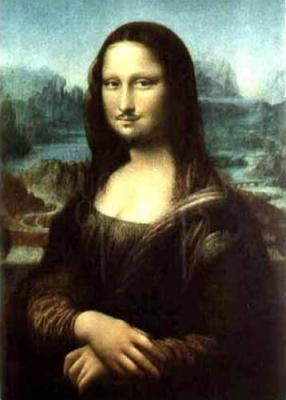
Duchamp
In 1919 the artist Duchamp painted a moustache on a copy of the Mona Lisa as an irreverent statement on traditionally revered art. Almost one hundred years later the same statement is repeated by several “rebel” artists wishing to disconcert the art establishment by imposing the modern on the admired old. Works such as Jake and Dino’s Chapman’s Great Deeds Against the Dead, exemplify this; a reproduction of one of Goya’s images of cruelty as a life size tableau featuring a dismembered mannequin impaled on a tree. The brothers went even further and after purchasing a pristine set of 80 Goya etchings printed from the artist's plates Disasters of War, systematically went through the entire collection and changed all the visible victims' heads to clowns' heads and puppies’ heads. Although he didn’t destroy any original works to do it, similarly Banksy’s Show me the Monet, depicts the litter of the urban modern on Monet’s landscape and more recently, in 2003 British artist Cornelia Parker wrapped Rodin's iconic sculpture, The Kiss in string and called it The Distance: A Kiss With Added String. Parker's intention was to make an ironic statement about the ‘preciousness’ of the Art Establishment and the public eulogizing of famous works.
The exhibit had barely begun when an unappreciative spectator took to the string with a pair of sharp scissors, apparently intending a statement of their own. The Tate gallery, oblivious to the irony involved, strongly condemned the 'scissor statement' saying it did not approve of “interference with work”. The rebellious spectator agreed. In all this though, is there anything which could be described as avant-garde? Aren’t these works all just re-workings of Duchamp’s by now historical moustache theme? Perhaps only the spectator with the scissors was truly “out there’, making a statement against a statement that wasn’t really a statement but rather a rapidly browning banana.
A Bourgois Phenomenon
It’s entirely possible the avant-garde could only flourish in a bourgeois capitalist state. The members of the avant-garde tend to come from an educated middle class, who feel apart or alienated from both class and society. The devolution or stultifying of the Russian avant-garde after the revolution shows that it needs a climate of free expression to thrive. An avant-garde which pushes the known boundaries of acceptable art, sometimes with revolutionary, cultural, or political implications could not be well tolerated by an oppressive State. However, somewhat ironically, where free-expression becomes so open as to create fewer avenues for rebellion, the avant-garde can be seen less as a purposeful movement and more a series of erratic individual self-expressions without real significance. In his essay, The Concept of the Avant-garde , written back in 1969, critic and French scholar John Weightman noted:
What I would call the avant-garde itch to jettison the past because it is the past and to hurry on the future may be so vague as to be quite formless. This, one might think, is carrying imprudence to the point of irrationality. It can be seen as a kind of intellectual catastrophism, an urge to throw the baby out with the birth water. But for a long time now, avant-garde attitudes have been marked by an extremism which is deliberately irrational. This is indicated, amongst other things by the contemporary American expression “way-out”, which seems to mean both belonging to the extreme of avant-garde and remote from the norms of reason.
Encounter Magazine, pp8-9
Postmodernism
Back in the middle half of the nineteenth century, the Realist artist Gustave Courbet considered himself among the first of the avant-garde artists, but saw a significance and purpose to his innovative art. Rejecting the idealized landscapes and portraiture of his day, Courbet wanted to paint the real world and the real people which inhabited it. In doing so he believed he was pursuing some sort of truth. Similarly the Impressionists, in their radical use of light and rough brush strokes, imagined that breaking through the traditions of the past would somehow illuminate new truths. The proponents of these movements desired not only to challenge traditional art but also society as a whole and by doing so reveal new truths which would transform their worlds for the better or at least create a better understanding of them. In visual art a realm of challenge to the status quo opened up and Realism and Impressionism was followed by a multitude of movements through Post Impressionism, Futurism, Cubism, Dadaism, Surrealism, Neo-Plasticism, Expressionism, Animalism, Pop art, Op art. Pop Tart Art, Neo-Pop, Post-Minimalism, Relational.….just to name a few.
Somewhere along this timeline of modernism and beyond the avant-garde developed a side shoot of extremism where the old idea of truths and of understanding ourselves and redefining society into something better than the status quo provided, gave way to a kind of acknowledgement of meaninglessness or insignificance as an art form. Some Avant-garde artists and intellectuals became enamoured with the idea that ‘facts’ and ’truth’s’ were illusions of the past, and should be despised. This new trend eventually culminated in the birth of Postmodernism and the firm [and contradictory] theory that all theories must be rejected as well as a complete denial of the possibility of knowledge. This demarcation between the avant-garde of Courbet and the Impressionists and the cult of meaninglessness can perhaps best be seen in Duchamp’s landmark Bicycle Wheel in 1913. By taking an ordinary object and declaring it “art” Duchamp was proclaiming that the bicycle wheel was as significant as anything else, thereby reducing all declared artistic ‘truths’ to equal significance and thus in a sense…insignificance.
Many contemporary artists have reprised Duchamp’s old banana. Tracey Emin’s unmade bed, My Bed and even Damien Hirst's Child Divided (a cow in formaldehyde) are variations on the Bicycle Wheel . Such works are said to derive significance from the meaning the artist places upon the work, as Duchamp had similarly stated many decades earlier, but these later works cant really be considered avant-garde, as they often mistakenly are, since the theme has been explored before. Once it has been pushed open, a boundary cannot be broken through again, although what the breakthrough produces may be elaborated upon.
Writing as he was in 1969, Weightman railed against the extremist branch of the avant-garde, believing there was little significance to be had in imitating the seemingly meaningless nature of the universe, either in art or thought. While he acknowledged that there could be no clear basis for moral and aesthetic assumptions, Weightman could not believe they are arbitrary and if they are not arbitrary, then they must be regarded as mysteries…mysteries we can still try to understand. Now, almost forty years later, the “no such thing as knowledge” incarnation of the avant-garde may already be a rotting banana of the past.
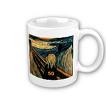
Unlike the exact sciences, knowledge in art is relative and what is regarded as significant tends to be decided on whether or not enough people say it is at any given point of time. Today’s masterpiece may eventually be tossed aside as tomorrows hackneyed scribbles. The moral and aesthetic judgements of art are never firmly decided but rather form a constantly shifting mass of opinion. Fashion plays its part in generating fresh or stale banana and to a very large extent the exponential growth of post war-capitalism has lent itself to the commandeering of the avant-garde for commercial purposes. It’s hard to be radical in a world where radicalism is brightly packaged and sold in department stores. The avant-garde has become a kind of side dish for capitalism and what was once out there and shocking to public taste can now be found languishing in dentists waiting room, proving that today's avant-garde is tomorrow's chocolate box.
It is a feature of capitalism to discover a new trend and popularize and commercialize it to the point where it’s in danger of losing its original significance. The sexual revolution, feminism, and the gay movement have all, to some extent, become grist for the capitalist mill. The avant-garde too, has become a commercial enterprise. This can be observed in clothing, music, art, film and literature. To be avant-garde is too be cool and to be cool is to be marketable. Thus the avant-garde is sucked up into the machinations of consumerism and cleanly sold to the aspiring fashion conscious mainstream whose greatest dread is to be ‘out-of-date’. It’s a short journey from original idea to the production lines and art ceases to be avant-garde when it appears on a t-shirt worn by a thirteen year old boy on his way to soccer practice…by then it has become merely mainstream. If the avant-garde is still alive and well then it appears to have been inflicted with a shorter lifespan. In an era of rapid changes the future seems ever to hover threateningly over the creative triumphs of the present.

Not Dead Yet
Before I began this minor exploration into the avant-garde I'd formed a loose conclusion that if it was if not quite dead, it was a seriously wounded phenomena. That conclusion has now freed itself entirely from any grip I may have had on it. Though there is no single, clear definition of what the avant-garde should entail, what is clear is that it derives its impetus from the human capacity to imagine possibilities that haven’t been explored before.
Avant-garde, literally translating as advance guard , is an old military term dating back to Medieval France but it seems only to have been used in it's present metaphoric sense, applying to literature and the arts in the last hundred years or so. This is not to say that what it represents is so new. The concept of the avant-garde seems to have been born of a rejection of the old medieval view of a finished universe and grew instead from a modern scientific perspective which recognized the universe as a phenomena evolving in time; thus the avant-garde artist’s preoccupation with moving from the past and into the future. The old certainties of religion and fixed universal truths gave way to a new breadth of possibilities. The avant-garde then, had its seeds in the late seventeenth, rather than the late nineteenth century, so before it became enmeshed with literature and fine art, it had already been affecting social and political thinking for two centuries. Of course the pushing of boundaries in thought had been occurring since ancient Greece and probably before so in that sense the avant-garde is as old as human nature, but before the scientific revolution and the enlightenment man had tended to deal in absolutes and certainties about the universe and the nature of existence.
It is precisely because the universe is constantly evolving in time and not a fixed and static state, that the avant-garde cannot die. That could only happen if we'd pushed through every boundary, explored every idea, imagined everything imaginable and understood every discovery. Not until we know everything can we cease to imagine what might be . If the mysteries of the universe seems infinite, then so too is our capacity for imagination and the avant-garde.
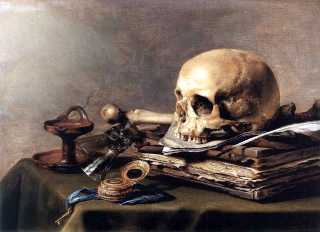
- More on Art...Sister Wendy
One of the wonderful things about a museum is how you're jolted into confronting art from strange and wonderful civilizations and you look and learn and expand your horizons. Sister Wendy Beckett As an...
- Jeffrey Smart
Self-portrait, Australian artist Jeffrey Smart An acquaintance of mine tells the story, not without a certain bitter rankle to his voice, of a time in the 1970's when he lived on the top floor of a block of... - American Gothic
Art critic Robert Hughes once remarked of this arresting image, painted in 1930 by Grant Wood : - Hyperrealism
An art dealer first used the term Hyperralisme (meaning Photorealism) back in the early 1970's to describe a genre of painting and sculpture that mimicked the exactness of high resolution photography....


